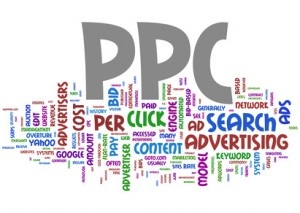Pay per click advertising is how Google has revolutionised advertising and it’s something that you and your organisation can leverage to finally have complete control over your advertising dollars and what you get back for them. One of the main benefits to advertising online is the potential cost savings associated with the pricing models available due to intense tracking capabilities and those pricing models themselves.
There are two types of pricing models available when advertising online. You can run on a CPM or Cost per Impression model, or a CPC or Cost Per Click model. When using a Cost per Impression Pricing model, you are charged to certain price for every 1000 times that your ad is shown. Now you will be charged regardless of whether or not people actually click on your ad.
If you’re advertising in the outdoor space on one of those cool electronic billboards, Cost per Impression would be what you pay each time 1000 cars drive by your billboard, whether or not the people driving those cars actually saw your billboard. Now Cost per Click is different. When using a Cost per Click pricing model, you are charged each time a user actively clicks on your ad. If you’re advertising in the Sunday newspaper, then maybe you’ve got an ad running for your specials on Black Friday.
If newspapers offered a Cost per Click model for their print editions, then you might think of it like this. You would only have to pay them for each time a customer actually cuts out your ad. With Cost per Click advertising, you’re only paying for the ad once a customer has actively engaged with it, instead of paying for the bulk placement whether or not it’s actually seen or read. Wow! Now this is something different.
You are only being charged to advertise to people who show that they actually want to be advertised to. Now take this concept to the Internet and you are now in complete control of your advertising dollars and you can see exactly where they go and what they did. Whichever way you decide to go CPM or CPC, not only are you getting more bang for your buck and more control over your ad spend, but you are also gathering useful data to help you make more informed decisions about how you’d like to use your advertising dollars in the future. Think about it.
For any typical ad, you are gathering information about how many people actually read your insert and where those people are. You can get information about how many people cut the coupons, how many people actually use them. With good analytics in place, the sky is the limit here. You can target all kinds of potential customers and track them as they interact with you, but when does it make sense to use CPM over CPC?
There are different strategies behind the use of each pricing model. You may be looking for more visibility and just want to increase brand awareness, or you may be interested in more direct response style marketing. If you’re interested in gaining visibility and you have strong branding and positioning objectives, then engagement or clicks might not be as important to you as the frequency in which your ad is shown.
In this case you might want to go with a CPM pricing model. On the other hand, if you are interested in only spending money when you get a direct response to your marketing efforts, you’ll likely want to go with a CPC pricing model. That way you won’t have to pay for any of your ad placements that don’t result in a click and that click is often the first step of your conversion or sales process.
So now that you know the Cost Per Click and Cost Per Impression models and how they might be used based on your advertising goals, hopefully you’re starting to see just how much flexibility and control you’re about to have over your advertising budget.



